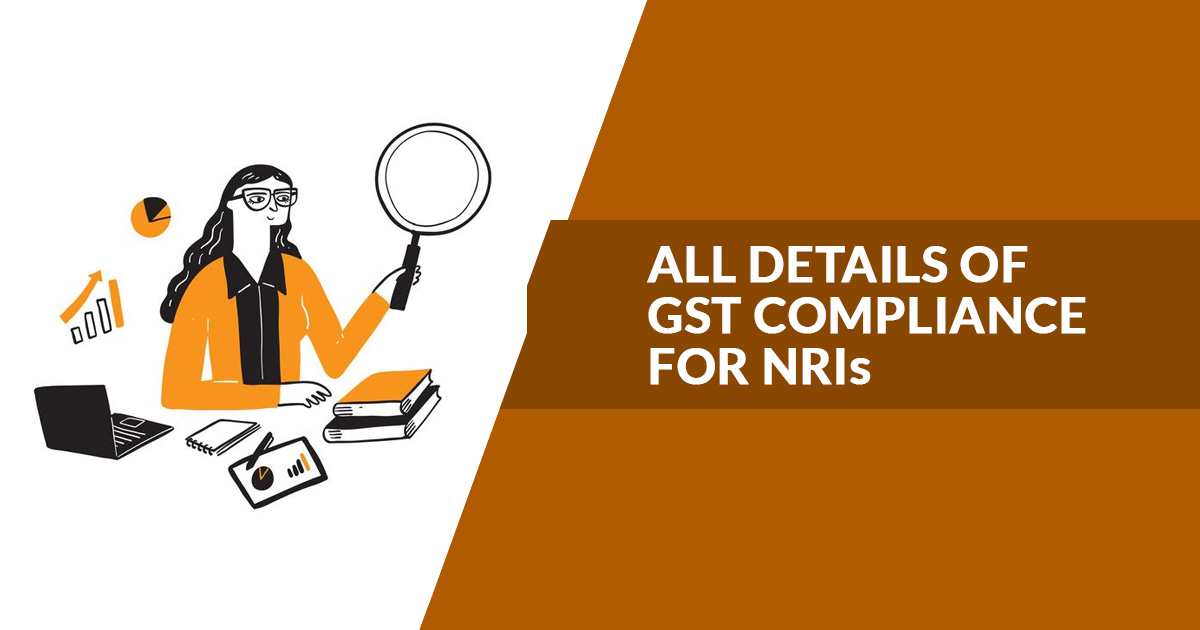
Every country expects that its native people “who reside abroad mostly” should invest in the domestic economy to boost the growth and development of the country. So is the case with India. India expects the injection of funds from Non-Resident Taxable Person (NRTP)
Who is NRTP?
In layman terms, An NRI that supplies goods and services in India is called NRTP. Coming to the technical definition of NRTP. Non-resident taxable person includes within its purview any person who occasionally/not regularly undertakes transactions that involve the supply of goods or services or both (as principal or agent) but who has no fixed place of business or residence in India.
We are here to simplify the explanation of the GST mechanism that has to be followed by a Non-Resident Taxable Person. Registration of NRI as NRTP has been explained in a previous article All Mandatory Conditions for NRTP GST Registration on the Portal
Goods and Services Tax (GST)
Recalling History in a hurry, GST in India, is imposed on the supply of goods and services excepting certain petroleum and other products. It came into force in July 2017.
Concept of Self-Assessment
The concept of self -assessment simply means that every registered NRTP shall itself calculate the tax liability under the prevailing GST law and furnish tax returns while following the compliances and procedures. Later on, if the GST payer is found guilty of filing wrong returns, he shall be penalised.
When GST is applicable?
Under GST, supply includes under its ambit all forms of supply of goods or services such as barter, transfer, sale, exchange, license, rental, lease, disposal, and so on. And Such supply is subject to tax only when it has been done for the objective of
- Furtherance of business
- For Consideration: The terminology ‘consideration’ in the context of the supply of goods or services mainly includes within its purview any payment that is made or agreed to be made, either in money or another way like barter and so on.
- Without consideration: It is applicable in case if transactions are also subject to tax.
Taxable Value
The tax that is payable is calculated mostly on an ad-valorem basis i.e. the percentage of the value of the supply of goods or services. In most of the cases, invoice value is a taxable value for imposing a particular tax. The Central Goods and Service Tax (CGST) and State Goods and Service Tax (SGST) is imposed in case of taxable supplies within a state or Union territory whereas Integrated Goods and Service Tax (IGST) is imposed in the case of supply between two different states/union territory. However, In the case of specified supplies like Motor cars, coal, aerated drinks, the compensation cess is also imposed in addition to said GST.
Avoiding Cascading effect
.Subject to certain conditions, The NRTP can avail of Input Tax Credit (ITC) of tax imposed by its supplier. Thereafter, the said ITC on inward supplies can be further be set off against the amount having liability on outward supplies and the balance tax liability left is to be paid.
For Instance, If the input of raw material purchased by A sufferers GST of Rs 50 and his output liability is Rs 60; then, X shall be required to pay only Rs 10 as GST to the government exchequer after adjustment of 50.
GST Return Filing for NRIs
The non-resident taxable person shall furnish a tax return in form GSTR-5 electronically via the GST portal. The rate of tax on goods and services can be broadly categorised in the four-rate structure of 5%, 12%, 18% and 28%.
The government has made every endeavour to make the processes of registration and compliances user-friendly and easy for NRTP for the purpose of facilitating ease of doing business in India. The entire process of GST registration, filing of return and signing of the return is to be done through the government portal at www.gst.gov.in .
After registration, the user ID and password would be generated from the web portal of GST portal, Using ID and password, all the tax returns are filed, and thereafter the taxes are paid online.
Interestingly and notably, The GST portal is interactive — the GST portal enables viewing and downloading of electronic cash and credit ledger, returns filed, registration certificate, notices and orders received from GST officers and so on. Furthermore, The portal also offers the feature of tracking the status of the refund application. Moreover, the taxpayer (NRTP) may also reply via online mode to the various notices and orders received. The electronic ledgers available on the web portal of GST are akin to an electronic passbook for GST.
Reverse Charge Mechanism Rule for NRIs
Moreover, the taxpayer has to gather/take tax from its customer and submit the same to the government. So a feature of the Reverse charge mechanism has also been made available.
Consequently, the taxpayer has to gather/take tax from its customer and submit the same with the government. The government has also mentioned various categories of the supply of goods or services in which it is necessary for the recipient of goods or services to make payment of tax if he is the person who is liable to make payment of the tax. There are various types of supplies that are covered under RCM like lawyer’s services, services received from goods transport agency, and so on.
GST Refund Process
In case if an excess deposit of the advance tax has been made by an NRTP, the same amount shall be refunded to NRTP only after he has furnished all the required returns with respect to the entire period for which the certificate of registration is granted to him. The online application for refund can be made by filling required details in GSTR -5 that is available on the GST portal.
The process of registration and filing of return is to be done through the government portal at www.gst.gov.in .









